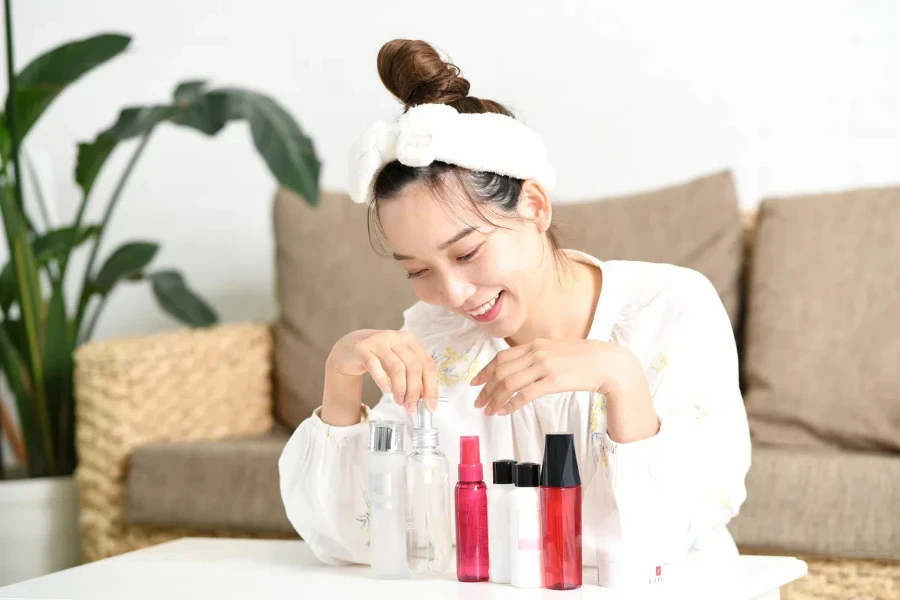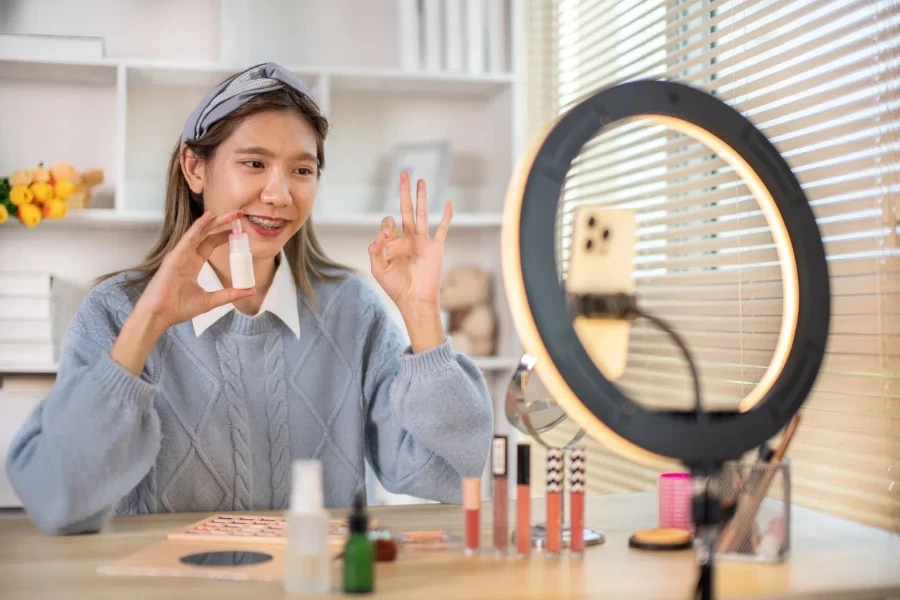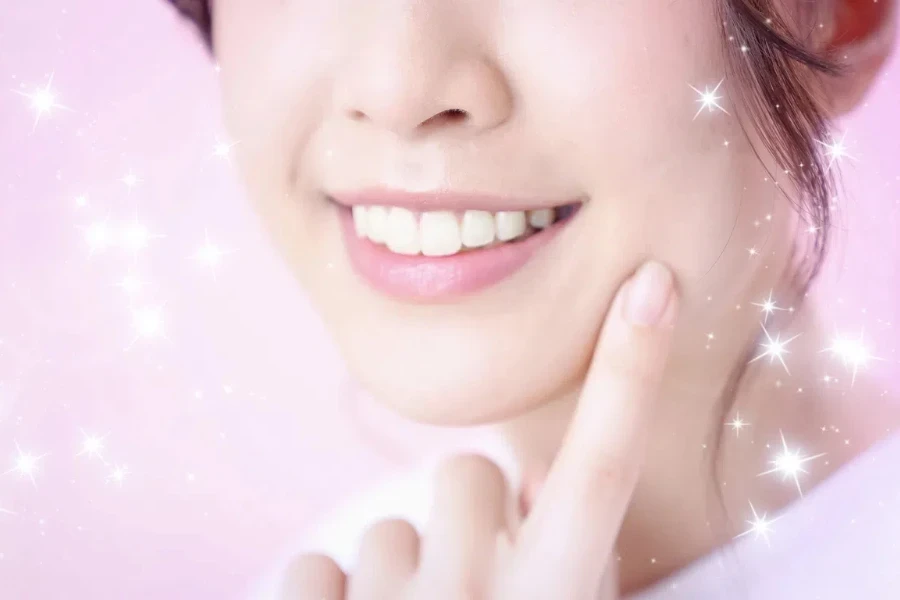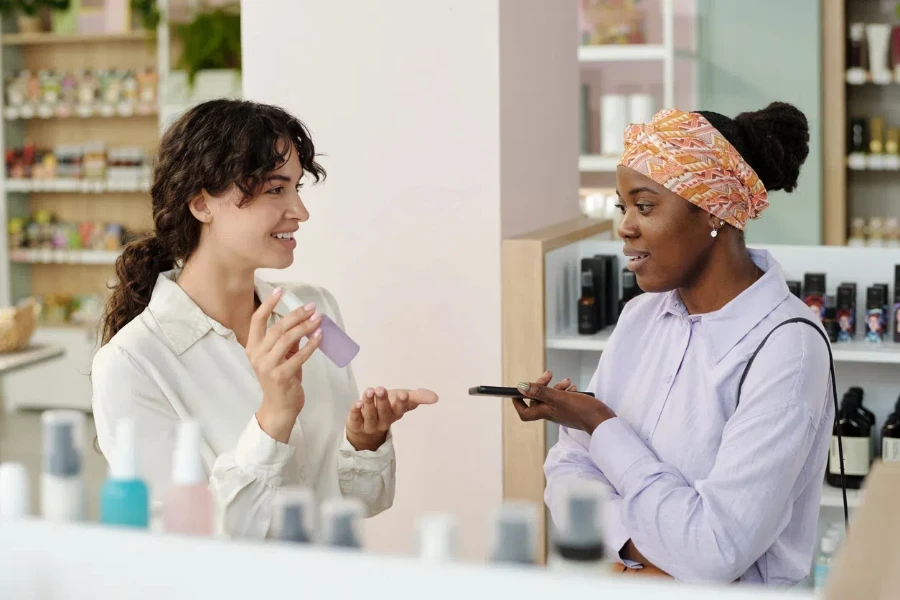The allure of K-Beauty, with its innovative ingredients and multi-step skincare routines, continues to captivate beauty enthusiasts worldwide. As we step into 2025, the K-Beauty market is poised for significant growth, driven by evolving consumer preferences and the influence of social media. This guide delves into the essence of K-Beauty tips and explores the market potential for business buyers looking to tap into this thriving industry.
Table of Contents:
– Unveiling the Essence of K Beauty Tips and Its Market Potential
– Exploring Popular K Beauty Product Types: Pros, Cons, and Consumer Feedback
– Addressing Consumer Pain Points with Innovative K Beauty Solutions
– New and Innovative K Beauty Products to Watch in 2025
– Essential Factors to Consider When Sourcing K Beauty Products
– Final Thoughts on Navigating the K Beauty Product Landscape
Unveiling the Essence of K Beauty Tips and Its Market Potential

Defining K Beauty Tips: What It Encompasses
K-Beauty, short for Korean Beauty, encompasses a wide range of skincare and cosmetic products that emphasize achieving flawless, healthy skin. Known for its innovative formulations, K-Beauty products often feature unique ingredients such as snail mucin, ginseng, and fermented extracts. The hallmark of K-Beauty lies in its multi-step skincare routines, which include cleansing, toning, moisturizing, and targeted treatments. This meticulous approach to skincare has garnered a global following, influencing beauty trends and routines worldwide.
Analyzing Market Demand: Social Media Trends and Hashtags
The K-Beauty market has seen a substantial surge in demand, largely fueled by the influence of social media platforms. Hashtags like #KBeauty, #GlassSkin, and #KoreanSkincare have amassed millions of posts, showcasing the popularity of K-Beauty products among consumers. According to a professional report, the global K-Beauty products market size reached USD 13.43 billion in 2023 and is expected to grow at a CAGR of 9.6% from 2023 to 2032. This growth is driven by the increasing awareness of comprehensive skincare routines and the rising influence of beauty influencers and celebrities who endorse K-Beauty products.
Aligning with Broader Trends: The Future of K Beauty
The future of K-Beauty is closely aligned with broader trends in the beauty industry, such as the shift towards natural and organic ingredients. Consumers are increasingly seeking products that are free from harmful chemicals and synthetic additives. For instance, brands like Whamisa and Innisfree are incorporating natural ingredients like honey and green tea into their formulations, catering to the growing demand for clean beauty products. Additionally, the focus on personalized skincare regimes is gaining traction, with brands offering targeted treatments and innovative formulations to address specific skin concerns.
The market potential for K-Beauty products is further bolstered by the expanding applications across various skincare needs. The use of unique ingredients such as snail mucin and propolis offers solutions for anti-aging, hydration, brightening, and acne treatment, attracting a diverse consumer base. The continuous development of new formulations and products is a significant driver of the market, with consumers drawn to the promise of superior results from using cutting-edge ingredients.
In conclusion, the K-Beauty market is set to thrive in 2025, driven by the increasing demand for effective skincare solutions and the influence of social media. Business buyers looking to tap into this market should focus on the latest trends and innovations in K-Beauty products to meet the evolving needs of consumers.
Exploring Popular K Beauty Product Types: Pros, Cons, and Consumer Feedback

Sheet Masks: Ingredients, Effectiveness, and User Reviews
Sheet masks have become a staple in the K-beauty industry, renowned for their convenience and efficacy. These masks are typically infused with a variety of active ingredients, such as hyaluronic acid, vitamin C, and various botanical extracts. According to a professional report, the popularity of sheet masks can be attributed to their ability to deliver a concentrated dose of these ingredients directly to the skin, providing immediate hydration and a noticeable glow.
However, not all sheet masks are created equal. Business buyers should consider the quality of the materials used in the mask itself, as well as the formulation of the serum. For instance, masks made from biodegradable materials are gaining traction due to their environmental benefits. Additionally, the effectiveness of the mask can vary depending on the concentration and stability of the active ingredients. User reviews often highlight the importance of a mask’s fit and adherence to the face, which can impact the overall experience and results.
Consumer feedback generally praises sheet masks for their instant results and ease of use. However, some users have reported issues with masks that are too heavily fragranced or cause irritation. Therefore, hypoallergenic options and those free from artificial fragrances are highly recommended for sensitive skin. Brands like Mediheal and Dr. Jart+ have received positive reviews for their innovative formulations and skin-friendly ingredients.
Essence and Serums: Key Ingredients and Consumer Preferences
Essences and serums are pivotal in the K-beauty regimen, often considered the powerhouse products for targeting specific skin concerns. These products are typically lightweight yet packed with potent ingredients such as niacinamide, peptides, and fermented extracts. According to industry insights, the use of fermented ingredients in essences is particularly popular due to their enhanced absorption and efficacy.
When sourcing essences and serums, business buyers should prioritize products with clinically proven ingredients and transparent labeling. The stability of these ingredients is crucial, as it affects the product’s shelf life and effectiveness. Packaging also plays a significant role; airless pumps and dark glass bottles are preferred to protect the integrity of the active ingredients from light and air exposure.
Consumer preferences lean towards products that offer visible results without causing irritation. Serums that address multiple concerns, such as hydration, anti-aging, and brightening, are highly sought after. Brands like COSRX and Missha are well-regarded for their high-quality formulations and effective results. User reviews often highlight the importance of texture and absorption, with lightweight, non-greasy formulas being the most favored.
Cushion Compacts: Benefits, Drawbacks, and Market Reception
Cushion compacts have revolutionized the makeup industry with their innovative design and multifunctional benefits. These products combine foundation, sunscreen, and skincare ingredients in a convenient compact form, making them a favorite among consumers for on-the-go touch-ups. According to market analysis, the inclusion of SPF in cushion compacts is a significant selling point, catering to the growing demand for sun protection.
However, there are some drawbacks to consider. The sponge applicator can harbor bacteria if not cleaned regularly, and the product may dry out faster than traditional liquid foundations. Business buyers should look for cushion compacts with antimicrobial sponges and airtight packaging to mitigate these issues. Additionally, offering a range of shades to cater to diverse skin tones is essential for market acceptance.
Market reception of cushion compacts has been overwhelmingly positive, with consumers appreciating the convenience and natural finish these products provide. Brands like Laneige and Sulwhasoo have set the standard with their high-performance formulas and luxurious packaging. User reviews often commend the buildable coverage and dewy finish, although some users with oily skin may prefer matte options.
Addressing Consumer Pain Points with Innovative K Beauty Solutions

Tackling Skin Sensitivity: Hypoallergenic and Gentle Formulations
Skin sensitivity is a common concern among consumers, and the K-beauty industry has responded with a plethora of hypoallergenic and gentle formulations. Products designed for sensitive skin typically exclude common irritants such as alcohol, artificial fragrances, and harsh preservatives. According to a professional report, the demand for such products is on the rise, driven by increased awareness of skin health and ingredient safety.
Business buyers should prioritize sourcing products that have undergone dermatological testing and are labeled as hypoallergenic. Ingredients like centella asiatica, chamomile, and aloe vera are known for their soothing properties and are frequently used in formulations for sensitive skin. Brands like Etude House and Innisfree have developed lines specifically catering to this market, receiving positive feedback for their gentle yet effective products.
Consumer success stories often highlight the relief and improvement in skin condition after switching to hypoallergenic products. However, it is crucial to ensure that these products are free from potential allergens and irritants. Transparent ingredient lists and certifications from reputable organizations can enhance consumer trust and satisfaction.
Combatting Aging: Anti-Aging Ingredients and Their Efficacy
Anti-aging remains a top priority for many consumers, and K-beauty brands have excelled in developing products that address this concern. Key ingredients such as retinol, peptides, and hyaluronic acid are commonly used for their proven efficacy in reducing the appearance of fine lines and wrinkles. According to industry insights, the combination of these ingredients with traditional Korean herbal extracts offers a unique approach to anti-aging skincare.
When sourcing anti-aging products, business buyers should consider the concentration and stability of active ingredients. Products that combine multiple anti-aging ingredients can offer synergistic benefits, enhancing their overall effectiveness. Packaging that protects these ingredients from degradation is also essential to maintain product efficacy.
Consumer feedback on anti-aging products often emphasizes the importance of visible results and skin tolerance. Brands like Sulwhasoo and Amorepacific are renowned for their luxurious formulations and impressive results. User reviews frequently mention improvements in skin texture, firmness, and hydration, making these products highly desirable in the market.
Dealing with Acne: Effective Ingredients and Consumer Success Stories
Acne is a prevalent issue that affects a significant portion of the population, and K-beauty brands have developed targeted solutions to address this concern. Ingredients such as salicylic acid, tea tree oil, and niacinamide are widely recognized for their effectiveness in treating acne. According to a professional report, the inclusion of these ingredients in various formulations, from cleansers to spot treatments, has proven successful in managing acne-prone skin.
Business buyers should focus on products that offer a comprehensive approach to acne treatment, including prevention, treatment, and post-acne care. Products that are non-comedogenic and free from pore-clogging ingredients are particularly important. Additionally, formulations that include soothing agents like centella asiatica can help reduce inflammation and promote healing.
Consumer success stories often highlight the dramatic improvement in skin condition after using targeted acne treatments. Brands like COSRX and Some By Mi have garnered a loyal following for their effective and affordable acne solutions. User reviews frequently praise the reduction in breakouts and improvement in overall skin clarity, making these products a valuable addition to any skincare line.
New and Innovative K Beauty Products to Watch in 2025

Cutting-Edge Skincare Technologies: What’s New?
The K-beauty industry is at the forefront of skincare innovation, continually introducing cutting-edge technologies that enhance product efficacy. One notable advancement is the use of microcurrent devices, which stimulate facial muscles and improve skin elasticity. According to industry reports, these devices are becoming increasingly popular for their ability to deliver professional-grade results at home.
Another emerging technology is the incorporation of artificial intelligence (AI) in skincare. AI-powered devices can analyze skin conditions and recommend personalized skincare routines, offering a tailored approach to skincare. Brands like LANEIGE and IOPE are leading the way with their innovative use of technology to enhance the consumer experience.
Business buyers should keep an eye on these technological advancements and consider incorporating them into their product offerings. The demand for high-tech skincare solutions is expected to grow, driven by consumers’ desire for effective and convenient skincare options.
Emerging Trends in K Beauty Makeup: Products and Innovations
K-beauty makeup trends are constantly evolving, with a focus on achieving a natural and radiant look. One of the emerging trends is the use of multi-functional makeup products that combine skincare benefits. For example, BB creams and CC creams offer coverage while providing hydration and sun protection. According to market analysis, these products are highly popular among consumers for their convenience and effectiveness.
Another trend is the use of innovative textures and finishes in makeup products. Cushion foundations, jelly blushes, and water-based tints are gaining popularity for their lightweight and dewy finish. Brands like 3CE and Clio are known for their trend-setting makeup products that cater to the latest beauty trends.
Business buyers should consider these emerging trends when sourcing makeup products. Offering innovative and multi-functional makeup products can attract a wider consumer base and meet the growing demand for versatile beauty solutions.
Sustainable and Eco-Friendly K Beauty Products: Market Impact
Sustainability is becoming a significant factor in consumer purchasing decisions, and the K-beauty industry is responding with eco-friendly products. Brands are increasingly using sustainable packaging, such as biodegradable materials and refillable containers. According to a professional report, the demand for sustainable beauty products is on the rise, driven by environmentally conscious consumers.
In addition to packaging, the use of natural and organic ingredients is also gaining traction. Brands like Innisfree and Whamisa are known for their commitment to sustainability and eco-friendly practices. These brands use ingredients sourced from organic farms and prioritize environmentally friendly production methods.
Business buyers should prioritize sourcing sustainable and eco-friendly products to meet the growing demand for environmentally responsible beauty solutions. Highlighting the sustainability aspects of products can enhance brand reputation and attract eco-conscious consumers.
Essential Factors to Consider When Sourcing K Beauty Products

Quality and Authenticity: Ensuring Genuine Products
Ensuring the quality and authenticity of K-beauty products is crucial for business buyers. Counterfeit products are a significant concern in the beauty industry, and sourcing from reputable suppliers is essential. According to industry experts, verifying the authenticity of products through certifications and quality control measures can help mitigate the risk of counterfeit products.
Business buyers should work with suppliers who have a proven track record of providing genuine products. Conducting regular audits and inspections can ensure that the products meet the required quality standards. Additionally, sourcing products with certifications from reputable organizations can enhance consumer trust and confidence.
Supplier Reliability: Key Indicators to Look For
The reliability of suppliers is a critical factor in sourcing K-beauty products. Business buyers should look for suppliers with a strong reputation and a history of timely deliveries. According to industry reports, working with reliable suppliers can help ensure a consistent supply of products and minimize disruptions in the supply chain.
Key indicators of supplier reliability include their track record, customer reviews, and responsiveness to inquiries. Establishing strong communication channels and building long-term relationships with suppliers can also enhance reliability. Business buyers should prioritize suppliers who demonstrate a commitment to quality and reliability.
Pricing and Profit Margins: Balancing Cost and Quality
Balancing cost and quality is essential for business buyers when sourcing K-beauty products. While it is important to keep costs low, compromising on quality can negatively impact consumer satisfaction and brand reputation. According to market analysis, finding the right balance between cost and quality can help maximize profit margins and ensure long-term success.
Business buyers should conduct thorough market research to understand the pricing dynamics and identify competitive pricing strategies. Negotiating favorable terms with suppliers and exploring bulk purchasing options can help reduce costs. Additionally, offering high-quality products at competitive prices can attract more customers and enhance profitability.
Final Thoughts on Navigating the K Beauty Product Landscape
Navigating the K-beauty product landscape requires a strategic approach that prioritizes quality, innovation, and sustainability. By understanding consumer preferences and staying ahead of emerging trends, business buyers can source products that meet the evolving demands of the market. Ensuring the authenticity and reliability of suppliers, while balancing cost and quality, is essential for long-term success in the competitive K-beauty industry.




